How NASCAR Revolutionized Its Iconic Pit Stop For the 24 Hours of Le Mans
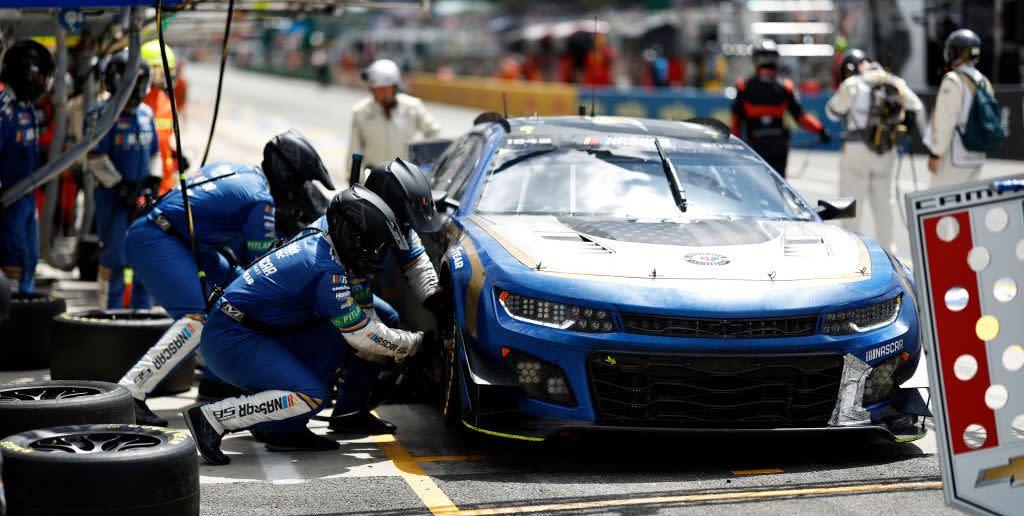
A few days ago, NASCAR roared through the 24 Hours of Le Mans. The sanctioning body used Le Mans’ experimental “Garage 56” entry to bring a V-8 Chevy Camaro to France with one of its most famous teams, Hendrick Motorsports, and drivers Jimmie Johnson, Jenson Button, and Mike Rockenfeller. The car immediately went viral for being loud, proud, and staggeringly American.
But the car wasn’t the only cool part of the program. So were the pit stops, which required modifying NASCAR’s hardcore approach to fit the rules of endurance racing.
NASCAR pit stops are all about precision and accuracy. Teams often seek out college and professional athletes to become part of their crews, which results in a five-person team changing all four tires and adding fuel in about 9 seconds. (I learned how to be a NASCAR tire changer last year. It was brutal.)
Evan Kureczka, Hendrick’s pit-crew coach, was lying on the floor when I walked into the Garage 56 stall on Sunday. It was 17 hours into the race, and Kureczka’s thick mustache and bootcut NASCAR fire suit were just as American as the car.
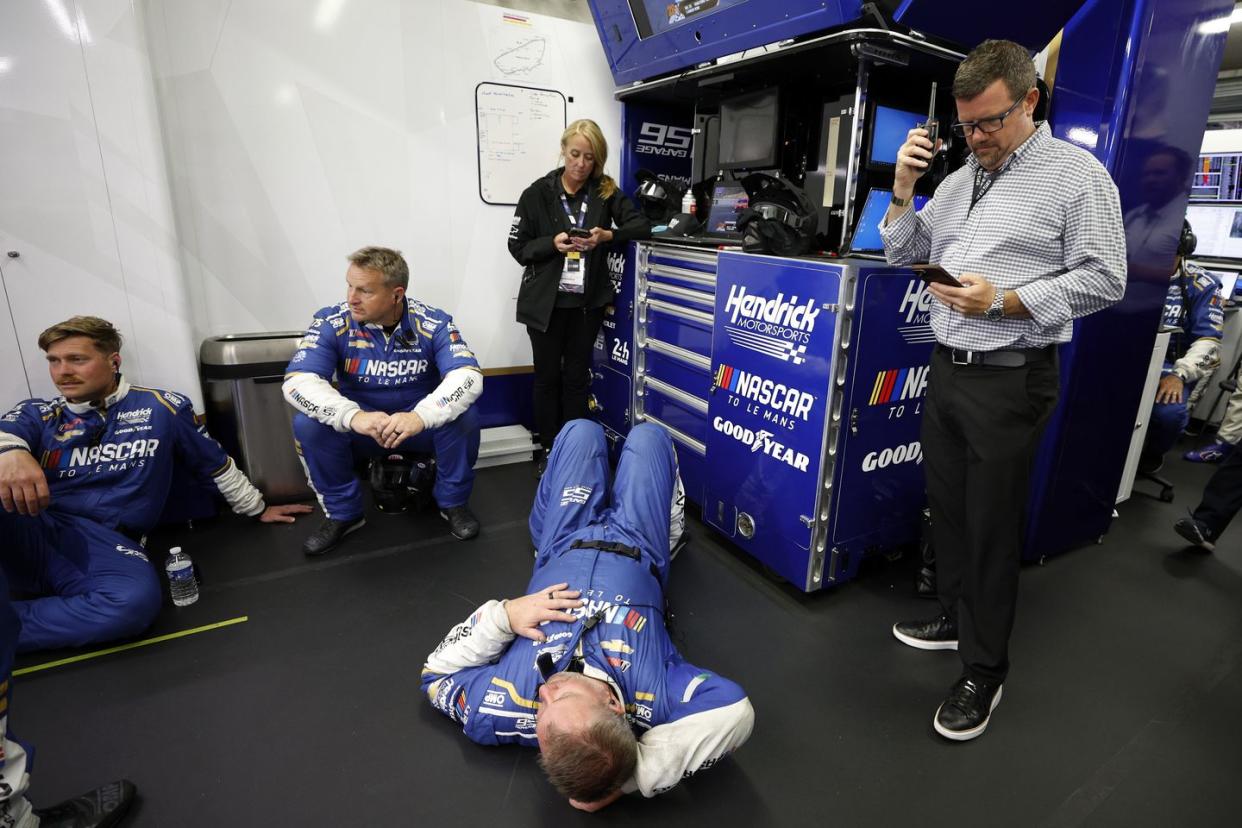
Kureczka has been at Hendrick since 2017. He currently oversees its pit department, which included bringing a crew to Le Mans this year and reimagining NASCAR pit choreography to follow a different series’ rules. The crew trained for eight months leading into the race.
It worked. They were so fast that despite being the only team using a NASCAR-style manual jack—not the quick air jack endurance racing is known for—they won Le Mans’ pre-race pit stop challenge in the GTE class and got fifth overall in the 62-car field. They were 0.3 seconds behind the winner. (In the race, the car finished 39th overall after mechanical issues.)
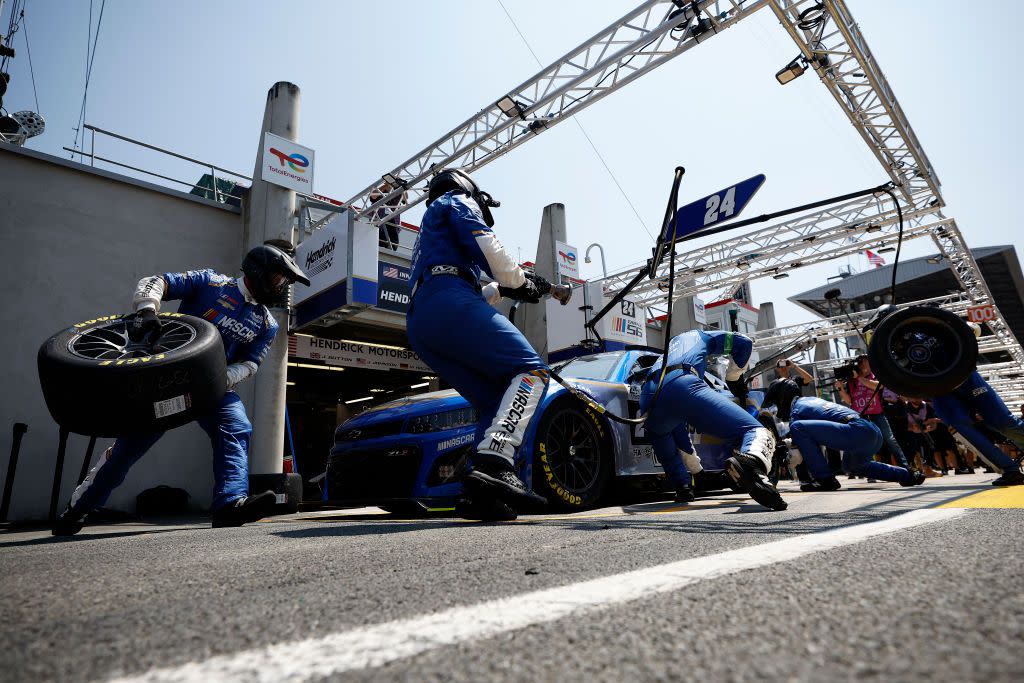
“Right now on Sundays [in NASCAR], we've broken below nine seconds,” Kureczka told Road & Track. “Our fastest stop is an 8.99, and these guys can go pretty fast too. They can run 9-second pit stops NASCAR style. Here, not quite as fast. We ran a 10.3 for the pit-stop challenge, which is probably one of our fastest stops we've run.”
A pit stop may only take 10 seconds, but a lot happens during it. Let’s break down the tweaks Kureczka’s team made for Le Mans, requiring his crew to relearn muscle memory for one race:
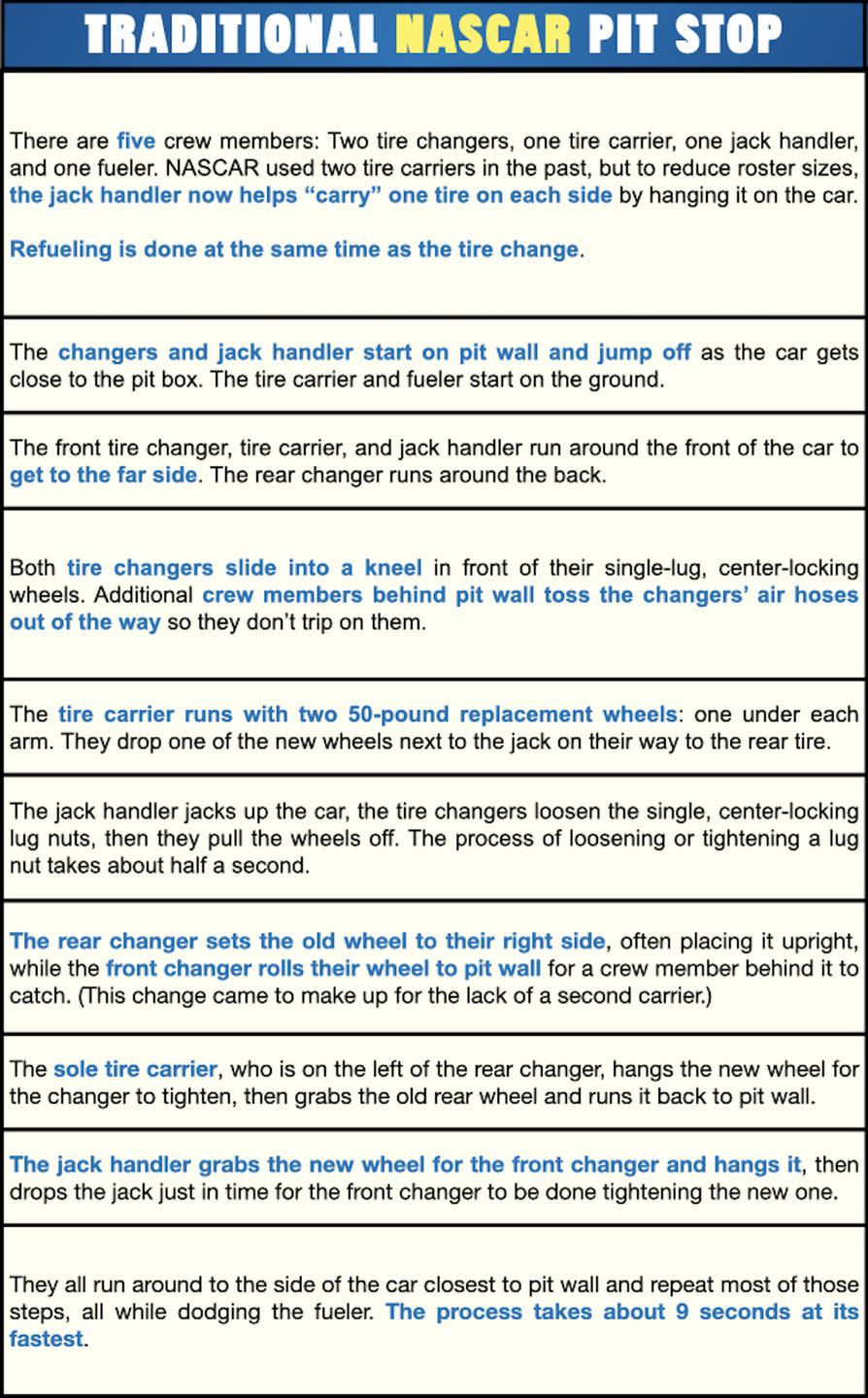
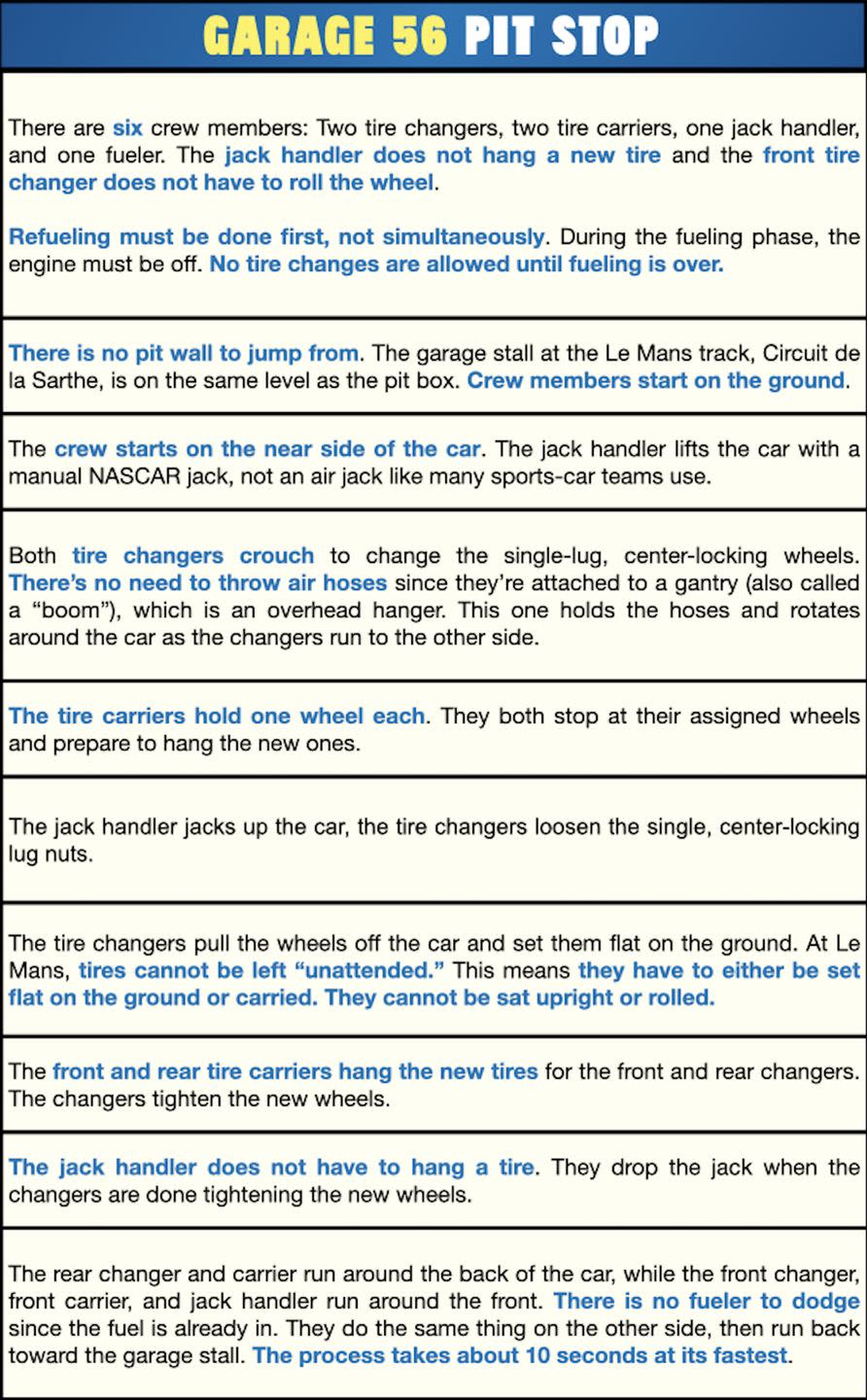
Here’s a video of a traditional NASCAR-style stop and a Le Mans one. I’ve labeled the major differences below:
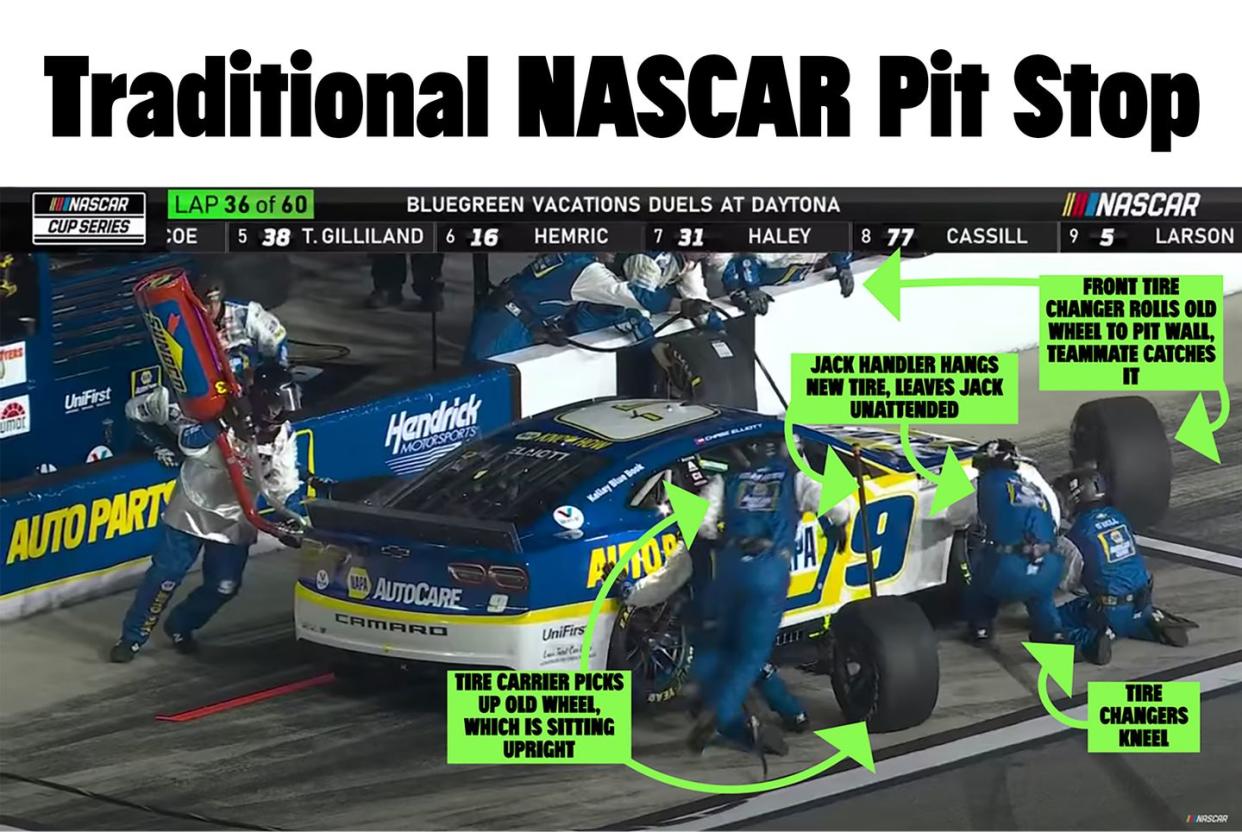
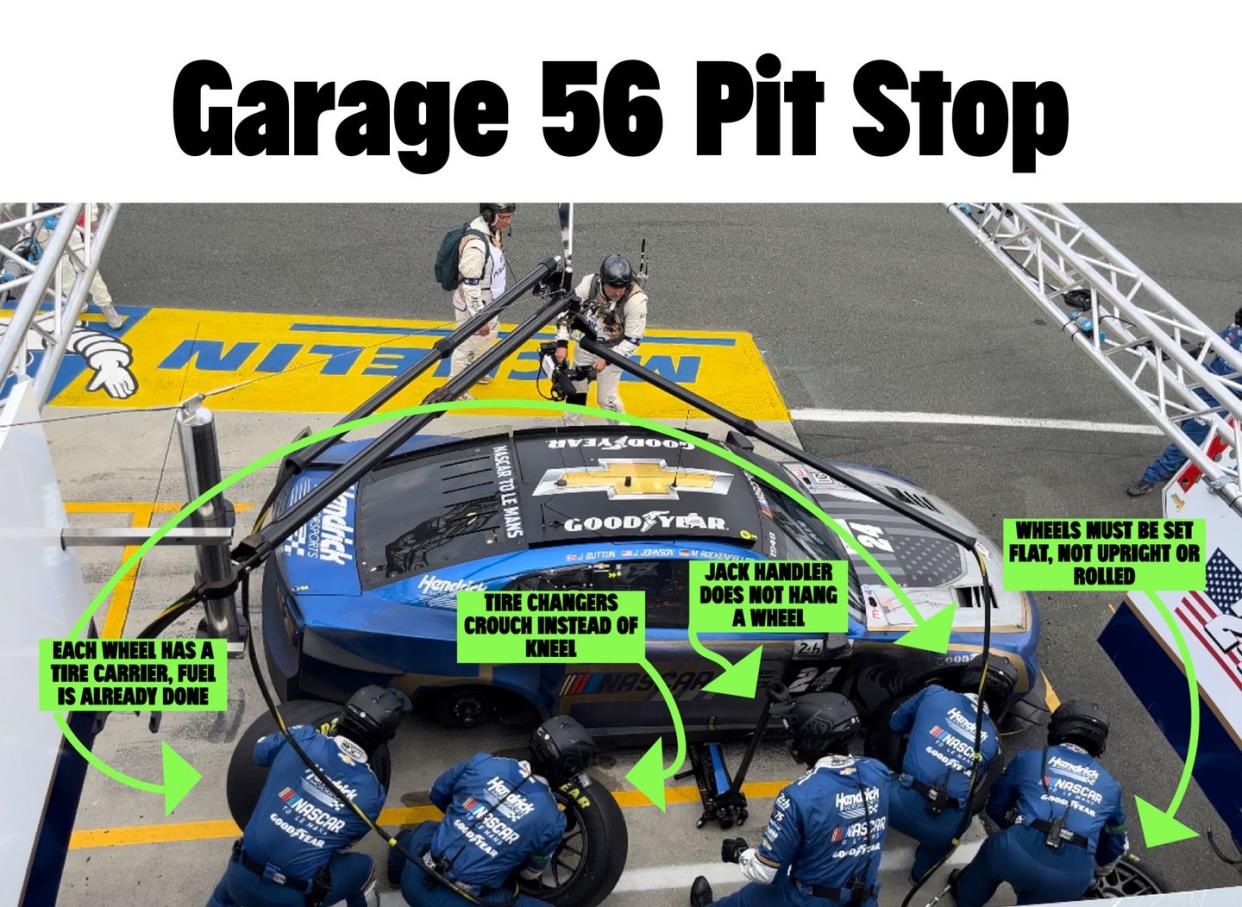
Kureczka’s team included current Cup crew members and developmental ones: jack handler Donovan Williams, who played football for UConn; tire carriers Cody French and Jarius Morehead, who also played college football; and tire changers Dawson Backus and Mike Moss, who played high-school football and college basketball, respectively.
They’re trained athletes whose entire job is to do pit stops quickly—not mechanics or people in hybrid roles on the team, as is common in other types of motorsport—and they took folks at Le Mans by surprise. Bozi Tatarevic, a professional racing mechanic and fellow writer at Road & Track, even got a text about them from an industry friend who was at the race.
“I [saw] them walking down the pits,” the person said. “Absolute units.”
One of my buddies that does crew work in F1 and WEC has spotted the Garage 56 pit crew at Le Mans. pic.twitter.com/CnF0QclaDU
— Bozi Tatarevic (@BoziTatarevic) June 5, 2023
Kureczka told Road & Track the biggest changes between a NASCAR pit stop and the modified Le Mans version include not jumping off pit wall and crouching to change the tires—a slightly slower alternative to kneeling.
“The rules here are, when you pull that tire, you have to set it flat in order for it to be controlled,” Kureczka said. “Whereas in NASCAR, we'll pull that tire and roll it. Because of the angle having it set it flat, there's concern that if you're on your knees, you would lose your wheel nut. It would pop off because the tire's going flat.
“In NASCAR, we also jump in front of the car when it's coming. Here, we have to complete fueling before we can cross the line. So that takes a little bit more time.”
The crew also had to make do with what they had at home to practice for Le Mans, including not using a boom—an overhead hanger that holds air hoses for the wheel guns as the team makes a pit stop. (In NASCAR, the hoses come from behind pit wall. A team member tosses and pulls them as the changers move so they’re out of the way.)
“We had to make quite a few adjustments once we got here,” Kureczka said. “We knew that we were going to have the boom, but we couldn't quite simulate it with the distances and all the surroundings. We tried to mimic it the best we could, but we knew we were going to have to learn when we got here too.”
NASCAR pit stops revolve around complicated, split-second muscle memory. To change them isn’t easy, especially when a race is 24 hours long—not four, like in NASCAR. But Kureczka’s team did it, all while napping in between.
Kureczka, meanwhile, kept his eyes open. When he walked back to his sleepy crew after talking to me, he still had seven hours left.
“I haven't slept all night,” he said.
You Might Also Like
